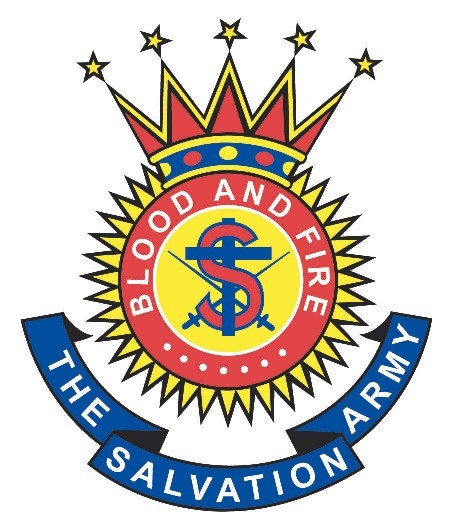The Salvation Army is often perceived through multiple lenses—charitable organization, social service provider, and spiritual community. However, the inquiry into whether it constitutes a religion in its own right compels a deeper exploration of its foundational tenets, practices, and overarching mission. The Salvation Army stands as a unique entity within the broader Christian landscape, embodying an amalgamation of faith, service, and a spiritual calling that merits attention.
In the quest to define the Salvation Army, it is essential to appreciate its origins. Founded in 1865 by William Booth in London, the organization emerged from a profound commitment to addressing the dire social issues of the time. Booth envisioned an army—not of rifles and guns, but of compassion and service, equipped to traverse the tumultuous battlegrounds of human suffering. This metaphor of an “army” serves as an intriguing gateway to understanding its dual nature: as a Christian mission and a humanitarian force. Just as soldiers are trained for battle, the members of the Salvation Army—known as “soldiers”—are prepared for the spiritual and social struggles faced by their communities.
At its core, the Salvation Army does espouse religious beliefs founded upon the tenets of Christianity. Its doctrine is rooted in Wesleyan theology, emphasizing personal salvation and social holiness. This faith is not merely an accessory; it is interwoven into the very fabric of the organization. The Salvation Army maintains that salvation is available to all, transcending barriers of class, ethnicity, and economic status. It offers a model of inclusivity that embodies the essence of Christ’s teachings, inviting all to partake in the grace that the organization seeks to distribute.
Yet, the Salvation Army is often distinguished by its operational emphasis on social services. Its multifaceted programs address hunger, homelessness, substance abuse, and disaster relief, responding to the pressing needs of society. This integration of faith and action portrays a profound understanding of the Christian doctrine that embodies faith without works as a dead faith (James 2:26). The Salvation Army seeks to embody a living faith, one that manifests through tangible acts of kindness and generosity. The metaphorical “bread of life” is offered not only in spiritual rituals but also through soup kitchens and shelters scattered across the globe.
The unique appeal of the Salvation Army lies in its holistic approach—spiritual nourishment intertwined with social action. This dual focus positions the organization as a bridge between the sacred and the secular, where individuals are invited to find solace in faith while actively participating in the betterment of humanity. The Salvation Army does not shy away from engaging with the physical struggles of life but rather embraces them as an intrinsic aspect of the spiritual journey. By doing so, it invites individuals into a shared mission where faith becomes palpable through the lived experience of service.
Furthermore, the organizational structure of the Salvation Army resembles an ecclesiastical hierarchy, complete with officers, soldiers, and adherents. This hierarchy fosters a sense of community and accountability that is reminiscent of traditional religious institutions. However, one must consider the extent to which this structure aligns with mainstream religious practices. In many ways, the Salvation Army operates more as a movement than a conventional church, emphasizing communal worship and outreach over doctrinal rigidity. Its weekly meetings might resemble congregational gatherings, yet they also serve as platforms for mobilizing community service, thereby reinforcing the notion that faith is not confined to places of worship.
Engaging with the Salvation Army also calls individuals to a transformative journey. The organization employs the notion of ‘salvation’ not only in the spiritual sense of redemption from sin but also as a call to action that liberates individuals from the shackles of societal distress. The metaphor of liberation reverberates through the Army’s mission, as it endeavors to free the marginalized from poverty, addiction, and despair. Such liberation is intricately linked to faith, underscoring the belief that spiritual renewal and social restoration are inextricably intertwined.
Critically, the Salvation Army encounters both acclaim and scrutiny in its operations. While its commitment to social justice and humanitarian aid is widely recognized, its stances on various social issues have drawn controversy, particularly regarding LGBTQ+ rights. These nuances highlight the complex intersection of faith and societal norms, prompting dialogical engagement within both the organization and the broader community. The challenges faced by the Salvation Army exemplify the struggles inherent in holding steadfast to faith while navigating the evolving ethical landscape.
In conclusion, the Salvation Army occupies a distinctive space within the Christian tradition. It defies a singular classification as merely a humanitarian organization or a conventional religion. Instead, it posits a compelling paradigm that harmonizes faith and service—the dual pillars upon which its mission rests. Through its commitment to uplifting individuals and fostering community, the Salvation Army aims to manifest a lived expression of Christian belief that transcends verbal proclamations. For those who join the ranks of this “army,” faith becomes an active endeavor, reinforcing the idea that true spirituality can only be realized through engagement with the world around us.
Ultimately, whether one categorizes the Salvation Army as a religion may be secondary to the profound impact it has on the lives it touches. Its legacy is not merely one of charity but rather of transformative love—a love that compels individuals to serve one another, echoing the very heart of Christ’s message. Through the lens of faith and action, the Salvation Army beckons all to join in the endeavor to bring hope and healing to a world in need.



